On the morning of July 9, 2010, the runway of an airport in Vienna, Austria, became the scene of a situation worthy of the most elaborate films about espionage. Two planes landed on it: one came from New York and the other from Moscow. Inside were two groups of spies who would be exchanged in an unprecedented situation since the end of the war. Cold War. Even more incredible, two of the spies had Peruvian nationality.
READ ALSO | Willy Joseph Cancel, the 22-year-old ex-marine who died in Ukraine while fighting Russia
The exchange was covered by the international press. Just 90 minutes later, both aircraft left to return to their countries. This was the last episode of a plot that had captured the attention of the entire world for two weeks.
It all started on June 27, 2010, the day the US police arrested 10 people: Anna Chapman, Richard Murphy, Cynthia Murphy, Michael Zotolli, Patricia Mills, Mikhail Semenko, Donald Howard Heathfield, Tracy Lee Ann Foley, and the two names that raised the most interest in these latitudes: Juan Jose Lazaro Fuentes Y Vicky Pelaez Ocampo.
These last two were Peruvian, or so their papers said.
The American investigation revealed that Lazarus his real name was Mikhail Anatolyevich Vasenkov, a spy for the KGB who had acquired Peruvian nationality and then emigrated with his wife, Peláez, a Peruvian print and television journalist who later worked for a Latino newspaper in the United States.
Last April 6, the Foreign Intelligence Service of the Russian Federation (SVR) reported that Vasenkov had died. The cause or place of his death was not specified. Mysteries of a spy.
Vasenkov’s faces
In January 2020, the SVR decided to declassify the biography of seven former Russian spies, the list included Vasenkov.
This allowed, finally, to put together the jigsaw puzzle about his life. He was born on October 9, 1942 (Americans thought he was born on September 6, 1943) in the town of Kuntsevo, Moscow. He graduated at the age of 23 with honors from the Moscow Higher Weapons Command School and a year later entered the KGBthe security agency of the then Soviet Union.
In 1968 he joined the ranks of the PGU, the unit dedicated to intelligence abroad. His first destination, in 1975, was Spain. The following year, he forged a Uruguayan passport and became Juan Jose Lazaro Fuentes. With this document he entered Peru.
According to the biography published by the Russian Government, his arrival in our country was motivated by the coup against Juan Velasco Alvarado. “Fears arose in Moscow that General Francisco Morales Bermúdez, who had come to power, would take a course towards rapprochement with the United States, and one of Vasenkov’s tasks was to clarify the political intentions of the country’s new leadership.”, review.
Lazarus He came to our country with Uruguayan nationality and the story that he had lived in Barcelona since he was 7 years old. He studied journalism, was a martial arts trainer and worked in some Lima magazines.
It was during that time when Lazarus He coincided with the internationalist and professor Juan Velit, both worked in the late Punto magazine.
“He argued that he was Uruguayan and that he had left his country because of the repression. On one occasion, 40 years ago, I remember telling him that he did not speak Spanish as Uruguayan or Argentine, not even as if Spanish were his mother tongue. He got upset, he got mad, but then we got back together.”, tells Velit for Trade.
The academic also remembers how he received the news about his capture in 2010. “Amazing. Something like that is amazing. I had some doubts about the way to talk about her, the ones I told you about before. But I never imagined that he was a Soviet agent. Then I lost contact with him. About 8 or 10 years ago some friends told me that they saw him in Peru, but I never saw him again”, narrates.
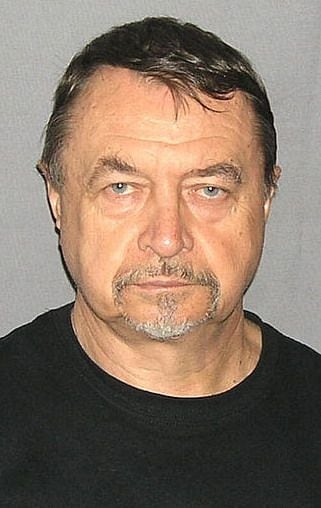
The journalist and the spy
Lázaro received Peruvian citizenship in 1979, three years after his arrival in the country. During this time he met Virginia Peláez Ocampo, a journalist born in Cusco whom he married in 1983 after -according to the biography published by the Russian Government- he received the approval of her bosses in the KGB.
Peláez worked for Channel 2 and her name gained notoriety in December 1984, after she was captured along with her cameraman by the terrorist group MRTA. Both were released weeks later after the media outlet agreed to broadcast a proclamation by the subversives in response to the threats against the lives of the hostages. Peláez later published an interview with her captors in which she denounced the torture perpetrated by the police in Cusco.
In 1985, Lazarus Y Pelaez decided to move to the United States, claiming to their Soviet bosses “the lack of working conditions in Lima”. Traveling with them was Waldo Mariscal, son of a previous engagement of Peláez. Before his departure, the couple transferred an apartment that he had bought in Torres de Limatambo, in San Borja, to citizen Eva Ocampo.
Trade The husband of the aforementioned citizen was contacted, who assured that the only relationship they have with Peláez is Eva Ocampo’s family relationship with the journalist. He also highlighted that they do not maintain contact with Peláez “for a long time”.
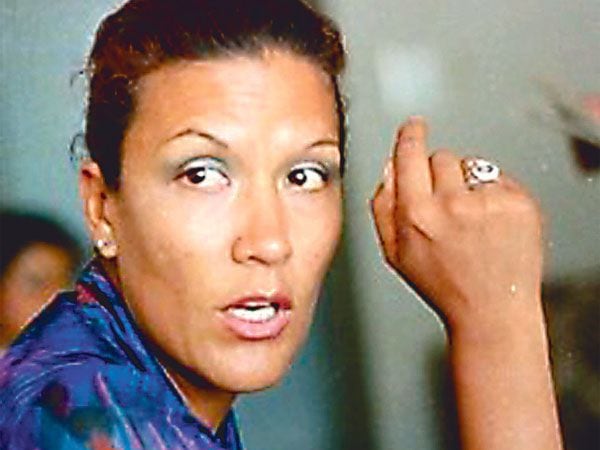
Operation “Ghost Stories”
Already in the United States, the family Lazaro Pelaez He settled in the Yonkers neighborhood of New York. Lázaro graduated in Political Science from the New School for Social Research and Peláez began working at the Spanish-language newspaper “El Diario”, where she became editor of the Politics section.
Lazarus, for his part, taught courses on Latin American politics at Baruch College in Manhattan. Peláez obtained US nationality and Lázaro obtained residency.
Everything indicated that it was an ordinary marriage; however, counterintelligence authorities were already on their trail.
Although the Russian military record details that Vasenkov retired in 2004 with the rank of colonel due to having reached the service age limit, documents presented during the case against him showed that he continued to provide information to Moscow.
According to Russian articles on Vasenkov, the spy had established close relations with officials from the left wing of the Democratic Party and had even provided “information about the US president’s scheduled foreign trips for the next several years”, without specifying which of the five leaders that the country had during his stay he refers to.
Conversations intercepted by the FBI against “the Yonkers,” as the Lázaro Peláez couple were called because of their place of residence, showed that the Peruvian journalist was aware of her husband’s operations. In a conversation from 2002, Peláez replies “So what do they have you for? If they don’t care about the country… why do they have intelligence services?“, after Vasenkov I will express that in Russia they did not considervaluable” the information you were sending.
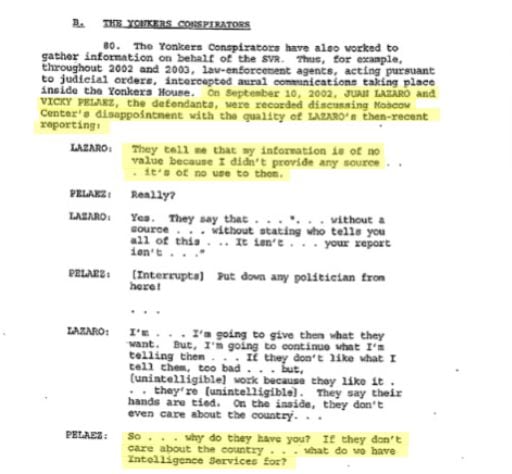
Another judicial document gives an account of the trips they made Pelaez Y Lazarus a “a south american nation”, presumably Peru, to collect briefcases with money sent by the Russian authorities.
In another conversation, captured in January 2003, Lazarus indicates to Pelaez what “when you go to the (South American country) I am going to write to you in ‘invisible’ and you will give it to them in a book”, to which the journalist responds “Oh ok”.
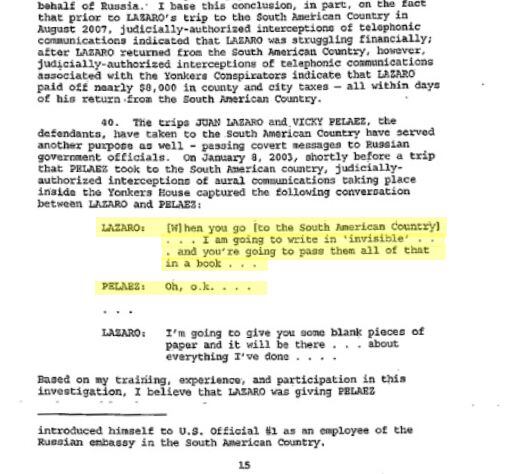
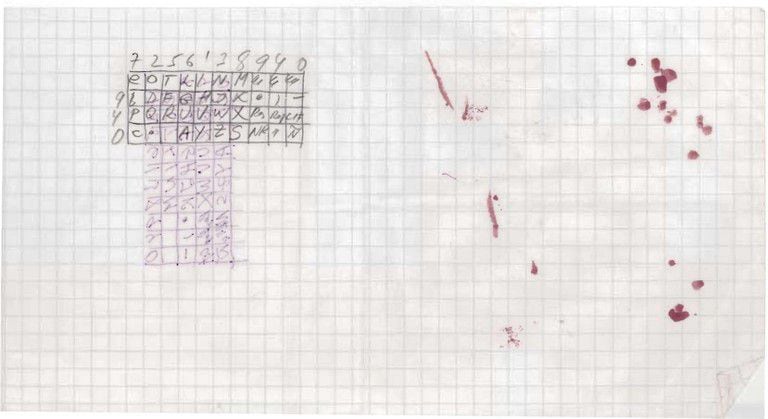
In any case, the end of this espionage story began to be written on June 27, 2010, when Russian Colonel Alexander Poteev was arrested by US intelligence services. Poteev is considered a traitor for Russiabecause it revealed the identity of 10 undercover spies who had managed to camouflage themselves in different parts of the country.
In addition to Yonkers, there were operations in cities as important as Boston or Virginia. The evidence collected by the FBI in the so-called “Ghost Stories” operation led to the case being accelerated, in addition to the deal offered by the Federal Government to exchange the spies for four other spies captured in Russia led to the group pleading guilty.
Peláez initially showed some resistance to pleading guilty but eventually relented. She argued that she did not know the true identity of her husband.
It should be noted that on the other hand, then President Dimitri Medvedev issued a special pardon for the four spies who had spent years serving their sentences in Russia. In the group was Sergei Skripal, who in 2018 was the protagonist of another worldwide news when he was poisoned together with his daughter in the United Kingdom. The episode was linked to President Vladimir Putin and the Russian secret services.
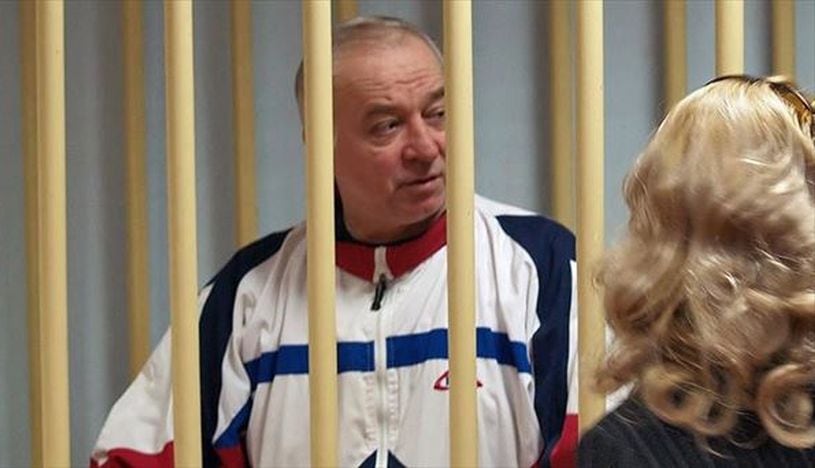
Return to Peru
The spies were received in Russia like true heroes. They were decorated by then-Prime Minister Putin and offered housing in Moscow, as well as a life pension for their service to the motherland.
Vasenkov and Peláez, however, rejected these benefits and expressed their desire to return to Peru. Between 2011 and 2013, at least the journalist would have returned to our country.
His eldest son, Waldo Mariscal, did the same. The information available in public records indicates that he would live in the city of Cusco and it is speculated that his mother too, although Trade has not been able to confirm the latter despite efforts to communicate with Peláez.
About Vasenkov, who received the Russian Order of Valor in 2010, an award that was added to the Red Banner awarded to him in 1988 and the Soviet Orders of Lenin in 1990, there are even fewer certainties.
Source: Elcomercio

:quality(75)/cloudfront-us-east-1.images.arcpublishing.com/elcomercio/AU6KJPUZGVBINJVZHMCVB7SILQ.jpg)


:quality(75)/cloudfront-us-east-1.images.arcpublishing.com/elcomercio/UUXBEIETUJGARKNBPDMXXOSCJM.jpg)
:quality(75)/cloudfront-us-east-1.images.arcpublishing.com/elcomercio/LQWAFNTXXRB33D5S4LQTFP24O4.jpg)

